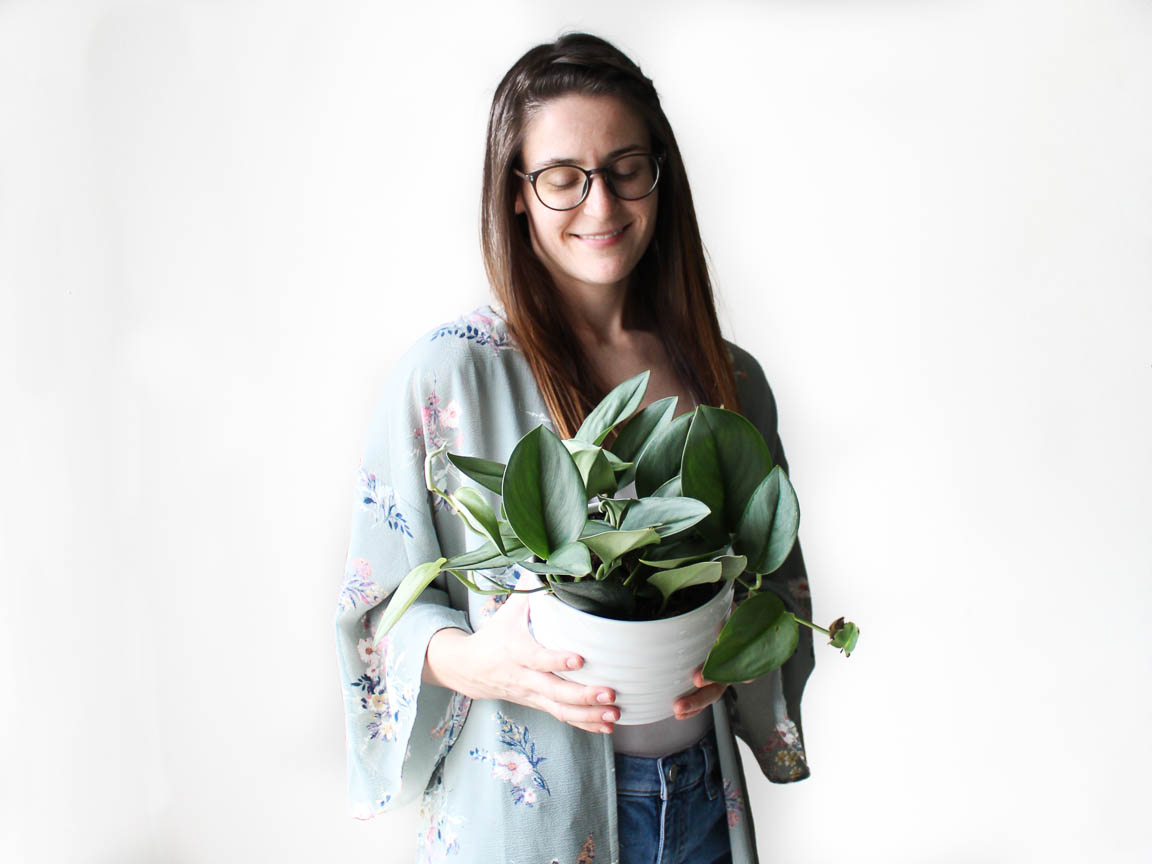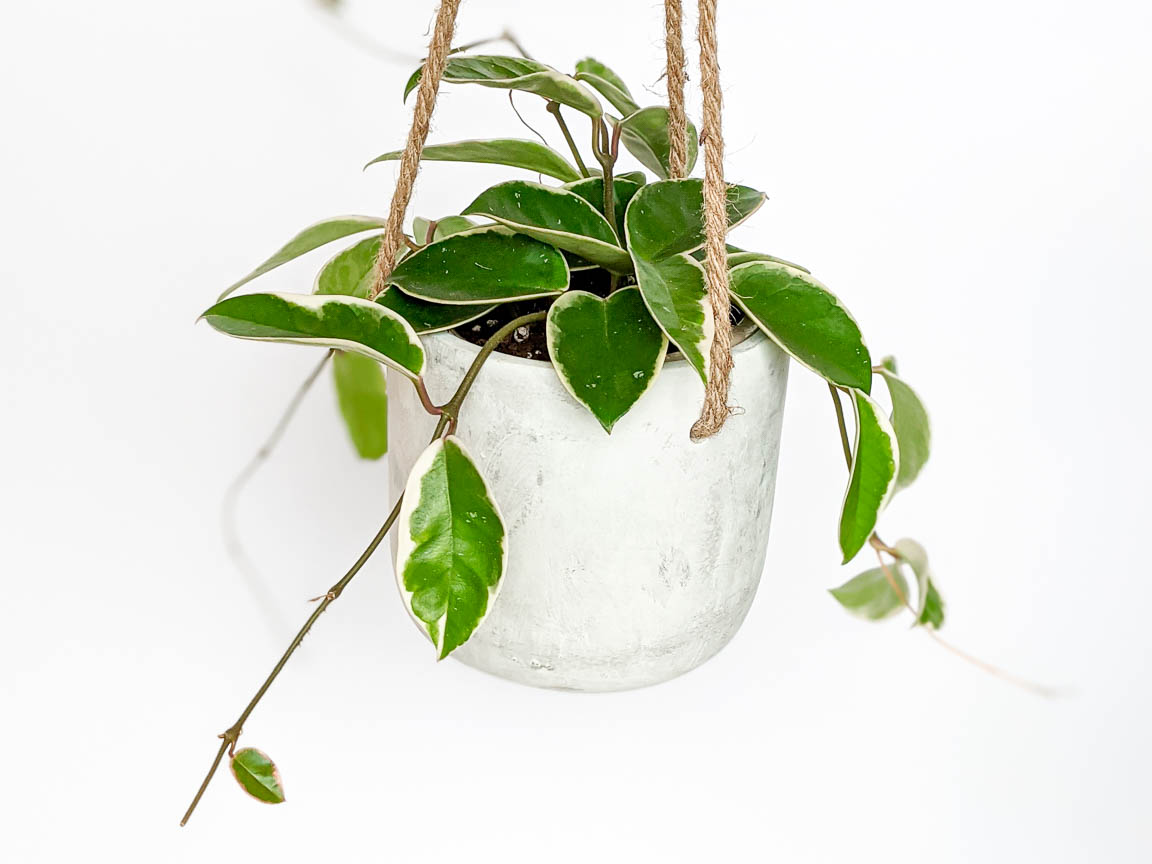I’m always on the lookout for sturdy, gorgeous plants that are also easy for everyone to care for. Sterling Silver Scindapsus plants are almost impossible to find, so when this glittering plant caught my eye, I couldn’t resist adding it to the family! I only just realized that this plant is actually quite rare and has only recently gained popularity among plant owners. I can see why… the buttery-smooth, mint-jade leaves that shimmer in the light, the added bonus of its ease of care. They’re gorgeous and practical!
Sterling Silver Scindapsus plants originated in the jungles of Southeast Asia and are related to Pothos, Philodendron, and Monstera plants. The similarities are obvious with their hearty vining leaves that can trail or be trained to climb. Read on to learn how to care for this “it” plant that’s recently made the spotlight.
Sunlight
Sterling Silver plants grow best in medium to bright, indirect light. The best place to keep this plant is near an East-facing window. A healthy dose of sunlight will help it grow full and lush! These plants will also do well with artificial light, such as from a grow light.
Water
Sterling Silver vines are sensitive to overwatering, so the top few inches of soil should be left to dry out between waterings. However, similar to succulents, these plants can hold a small amount of water in their thick leaves, and can tolerate more infrequent waterings.
Soil
Sterling Silver plants need well-draining soil to keep from becoming waterlogged. A cactus or succulent mix, or houseplant potting soil mixed with perlite or orchid bark will help water drain quickly. Be sure the pot you choose has a drainage hole.
Humidity
Like Monstera plants, Sterling Silver Scindapsus plants are native to tropical climates. Not to worry! They’ll thrive in low humidity conditions but will benefit in dry climates from frequent misting, grouping them with other plants, or keeping a humidifier nearby.
Fertilizing
Spring and summer are the best months of the year to fertilize Sterling Silver plants. Fertilizers that supply higher nitrogen levels will help keep leaves lush and growing strong.
Have you ever seen one of these gorgeous plants? They’re nearly impossible to find, so keep a lookout if you find yourself in need of one of these plants!
XO,
Micah


